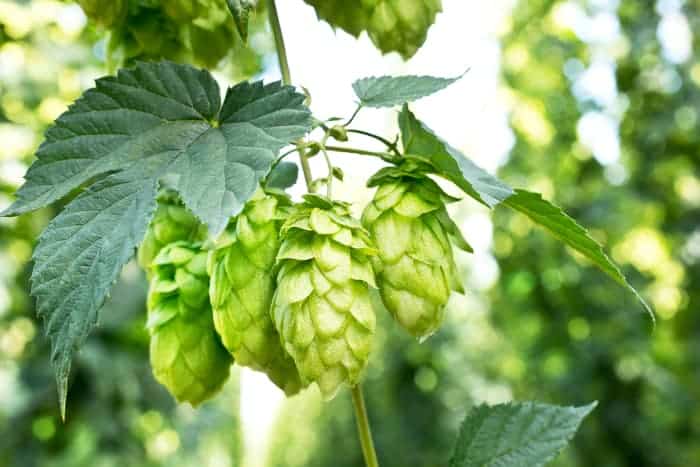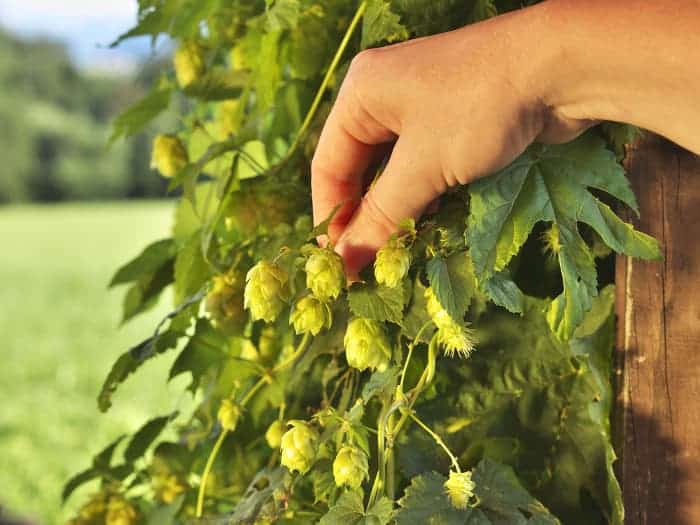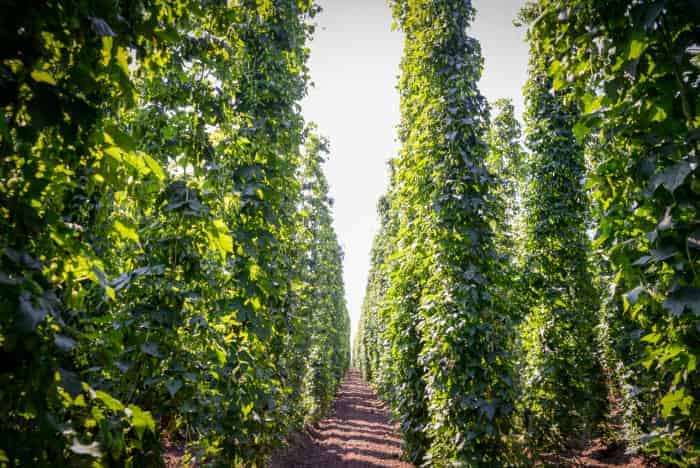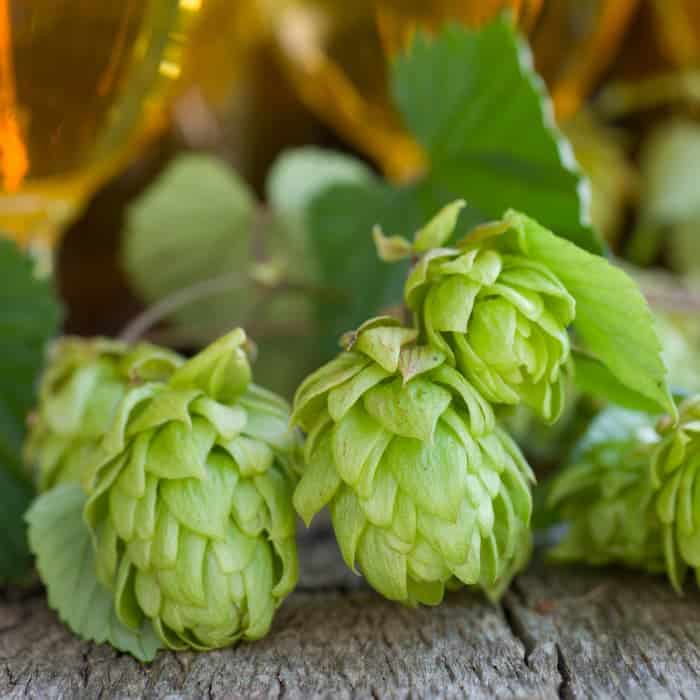High in alpha content and beloved for its high content of bitterness, Magnum hops are among the top European hops on the market today. While it was once the top hop plant in Europe, it now holds the number two spot while maintaining extremely high ratings. In this article, we’ll look at the history of Magnum hops and the best ways to use them.

History/Origin
Magnum was invented in Germany in the 1980s by the German Hop Research Institute in Hull, Germany. Also known as Hallertau Magnum, it’s now grown in the United States, but only in parts of the Pacific Northwest. Magnum came about due to cross-breeding the American female plant, Galena, with the German male plant, Magnum.
General Characteristics
Magnum features a strong but clean bitterness with subtle bits of citrus flavors. A very high alpha content contributes to its bitterness, along with high levels of humulone.
Flavor & Aroma Profile
Because of its high but smooth bitterness, Magnum is often used as a bittering agent in brews. Aside from its bitterness, Magnum also features subtleties of citrus flavorings, a floral aroma, and a lovely, hoppy taste.
Brewing Values of Magnum Hops
Here are the brewing values that are typical of Magnum hops. Keep in mind that every harvest and harvester has different methods that result in different values. However, these are the brewing values based on the average of most crops.
- Alpha Acid % – 10-16%
Alpha acid is where a brew gets its bitterness from. The higher the percentage of alpha, the greater its bitterness.
- Beta Acid % – 4.5-7%
Beta acid contributes flavor and aroma rather than bitterness to a brew.
- Alpha Beta Ratio – 1:1 – 4:1
Higher ratios of Alpha to Beta will yield brews with more bitterness and less citrus or floral flavors.
- Hop Storage Index – 18%
The hop storage index indicates the percentage of the alpha and beta acids lost after six months of storage at room temperature. 18% is exceptionally high compared to most other hops.
- Co-Humulone as % of Alpha – 21-30%
Low levels of co-humulone will result in a smoother bitterness as opposed to higher levels.
- Total Oils 1.6-3.0
Oils are added in the late stages of brewing to add flavor and aroma. The later you add oils during the boiling process, the more flavor they add. Here are the oils typically used with Magnum Hops.
- Myrcene – 30-45%
- Humulene – 30-45%
- Caryophyllene – 8-12%
- Farnesene – 0-1%
- All Others 0-32%
Beer Styles That Use Magnum Hops
Magnum is a versatile hop variety used in various beer styles, including IPAs, Ale, Lager, Stout, Blondes, German Pilsners, and Pale Ale.

Beers That You Can Buy That Use Magnum Hops
A few tasty beers using Magnum Hops that we recommend trying are:
- Lazy Magnolia – Southern Pecan
- Dick’s Brewing Company – Dick Danger Ale
- Blue Steel Magnum Pale Ale
- Single Hop Series Magnum from Hermitage Brewing Company
- Coffee Milk Stout from Stone Brewing Company
- And many, many more.
Common Substitutions For Magnum Hops
Common substitutions include Hallertauer Taurus, Columbus, Galene, Horizon, Northdown, and Nugget if you have trouble getting your hands on Magnum Hops. The number of substitutions readily available makes brewing a recipe that asks for Magnum a good option.
How to Grow Your Own Magnum Hops
Growing your own Magnum Hops is a challenge that requires patience and resilience. Hops take several years to develop and produce. However, once they start producing, they can continue to do so for 25 to 50 years. Here’s what you need to know about growing your own Magnum Hops.

Water
Magnum Hops plants require plenty of water to be fruitful, but not to the point of flooding the plant. You should be able to stick your finger 1 to 2 inches into the soil around your plant and feel moisture.
As your plant matures, the need for water is less but still necessary. The first two years are the most important to developing your hop plant.
Light
Magnum requires 6 to 8 hours of sunlight per day. Full sun is ideal unless you live in warmer climates with high temperatures. Where the temperature is consistently in the 80s and 90s, your plant will need a mixture of sun and shade.
Soil
Slightly acidic soil with a pH level between 6 and 7 is ideal for growing Magnum. The soil should also be well-drained and a mixture of sand and loam. Adding fertilizer that contains phosphate, potassium, and nitrogen will significantly increase Magnum’s production.
Zones
Magnum is a strong and resilient hop plant that can grow in hardiness zones 3 through 8. However, it’s a good idea to wait to plant your hops until after the last frost of the season. Nothing kills hops faster than a night of frost and freezing temperatures. Ideally, Magnum should be grown in warm, dry, and sunny regions like the Pacific Northwest.
Outdoor
Like all hops plants, Magnum should be grown outdoors with plenty of room above and around it. Hops can grow as tall as 30 feet when adequately supported.
Magnum is known for having low to medium yields and for maturing late. You likely won’t see consistent cone production until the third year after planting. However, once it starts growing and producing, it continues at a moderate rate until the end of its life.
Magnum is also resistant to pesky diseases such as verticillium wilt and downy mildew. You should, however, be on the lookout for powder mildew.

Where To Purchase Magnum Hops
If you’re interested in creating a homebrew that uses Magnum Hops, you can purchase them at Amazon.com. You can also buy one of its substitutes, Hallertau hops, at brewdemon.com.
Final Thoughts

Magnum Hops is one of the top varieties in Europe for a reason. It has unique qualities and brewing values like no other. Magnum is a great plant to try for first-time brewers or experienced ones alike. As long as you’re patient, Magnum is also an excellent hop for planting around your home.
Have you made any home brews using Magnum hops? Tell us about your experiences in the comments section below! For information about other kinds of hops, click here for our blog posts about brewing ingredients.
- About the Author
- Latest Posts
Jalin Coblentz was born and raised in northeast Ohio in the heart of farming country and grew up working in the family garden growing corn, tomatoes, potatoes, and a wide range of vegetables.
Canning and preservation were also a way of life for Jalin growing up, and he spent countless hours helping his mother, grandmother, and aunts with these duties. It’s now his passion to share his skills and knowledge with others to help them achieve their own growing goals.

